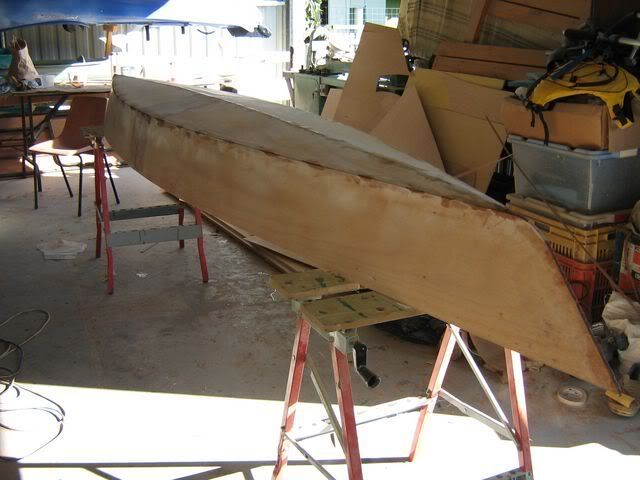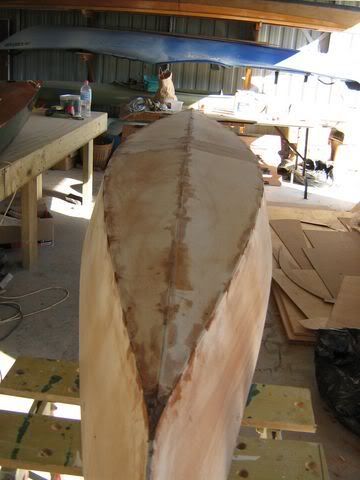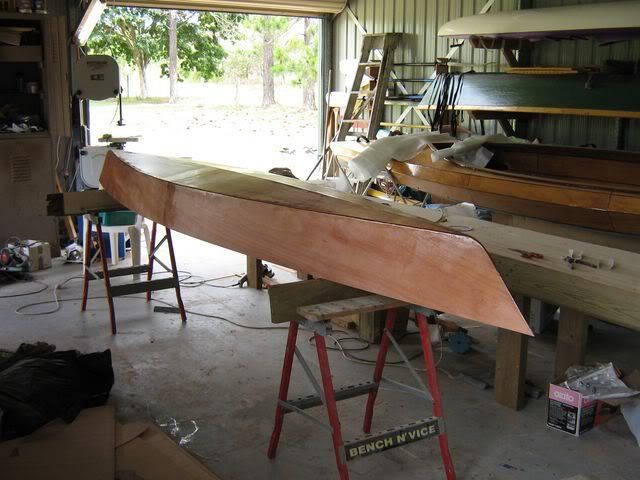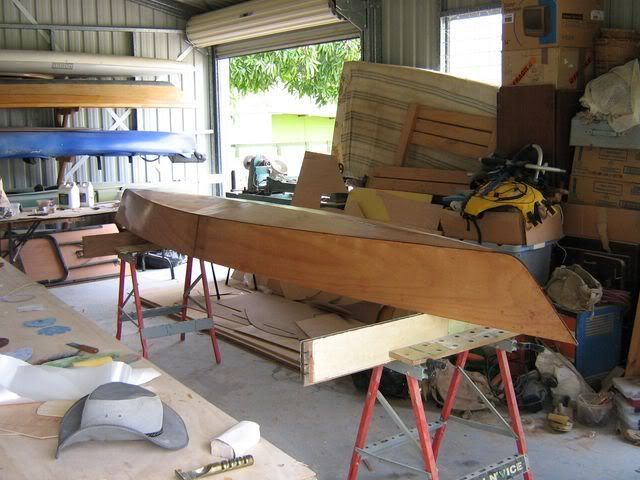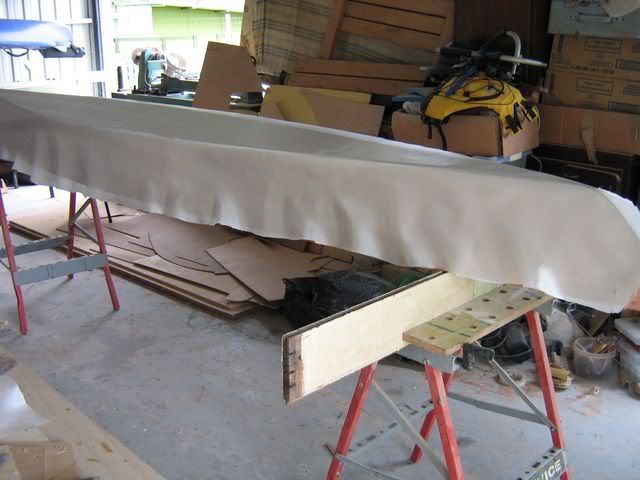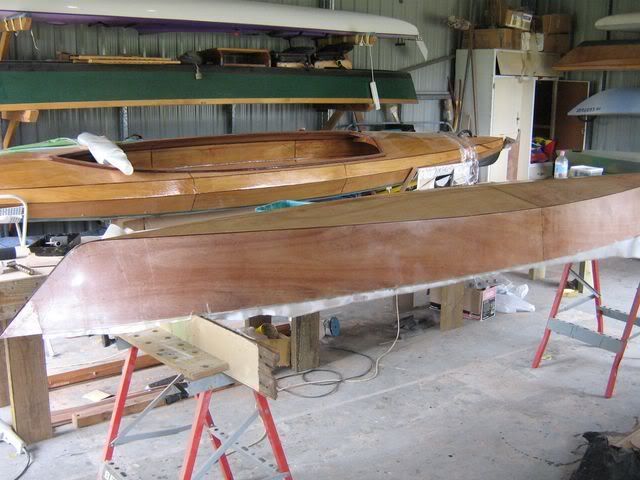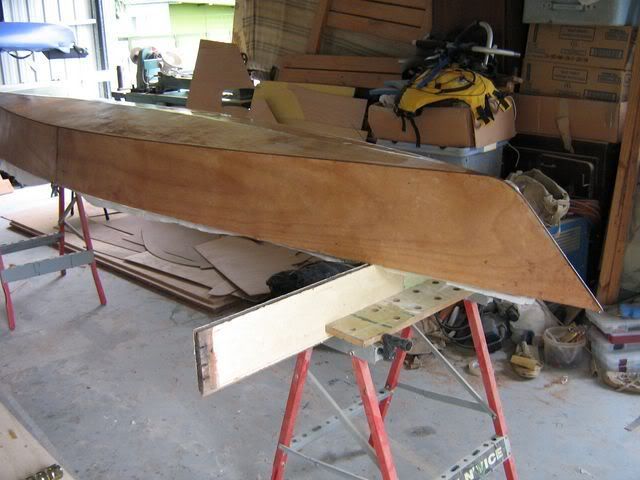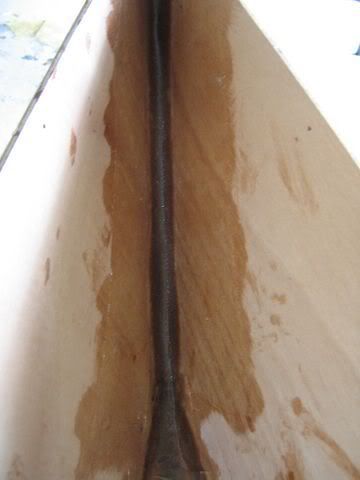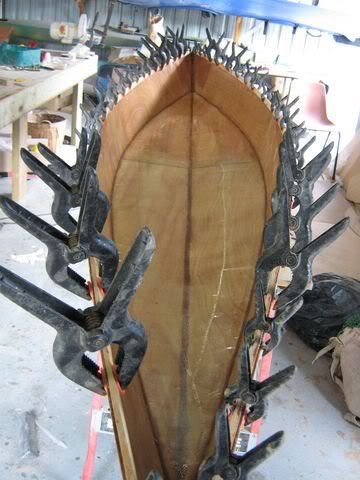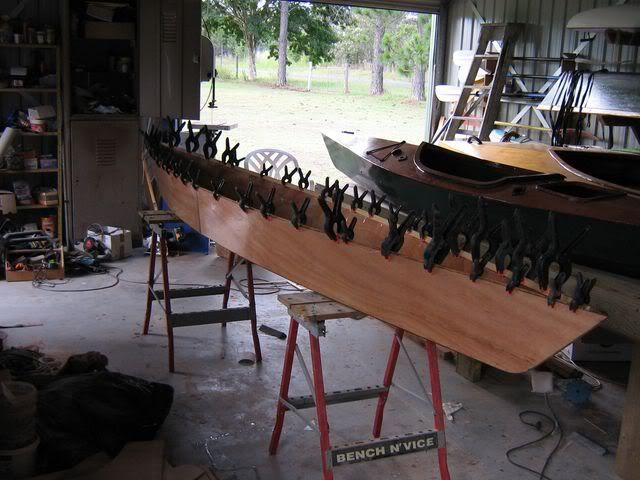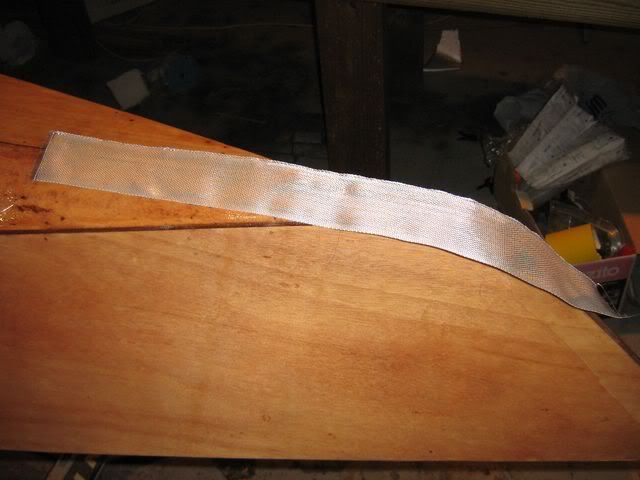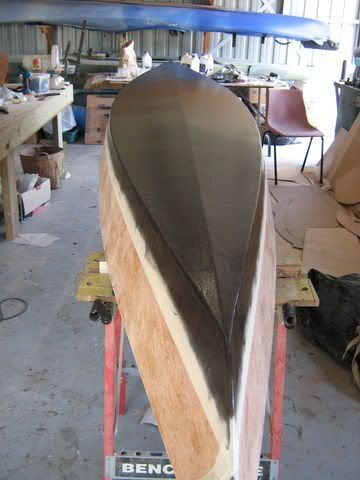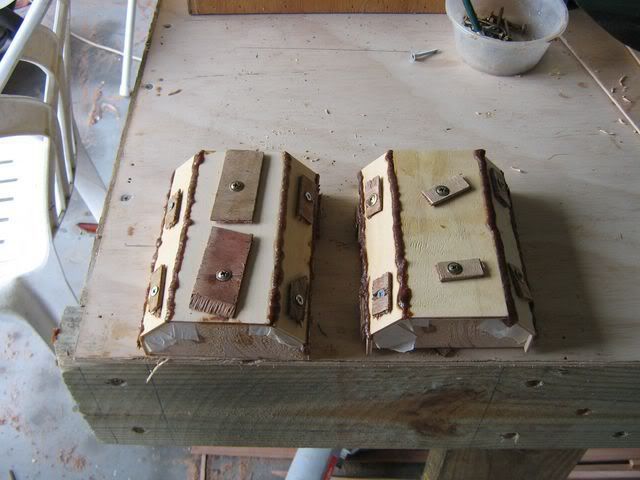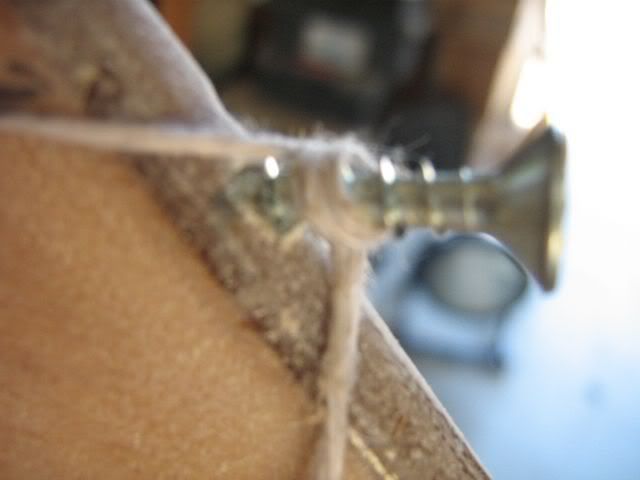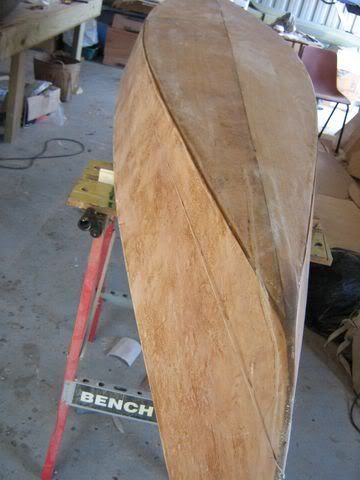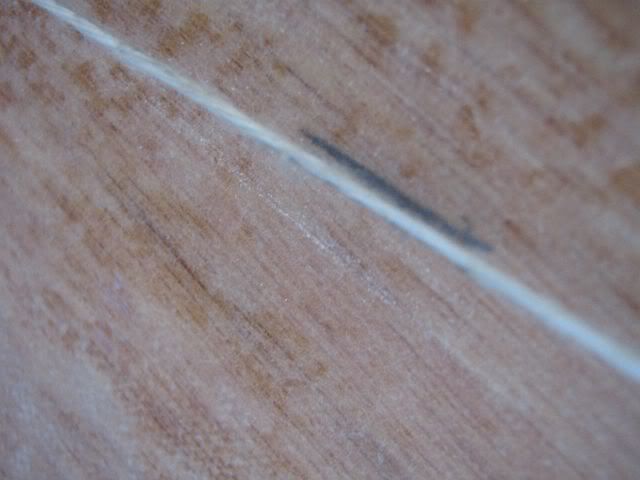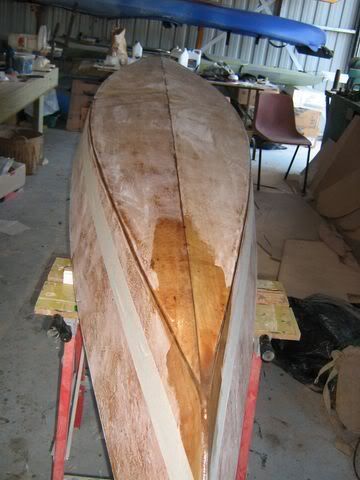Mick...
You have almost entered my domain, no spacers and tight fitting seams. Now the next is ....
Never mind .....I will not go there but you might make it. :lol: Anyway it works for me and that is all I care about. All of my boats , except for the kit one , Pygmy Coho , are made with the economy wood ( Can you say cheap).
Forgetting about the stripper pirogue I made from the Redwood I sawed out to make it , heck it was cheap also .. $55.00 worth of wood.
If the economy wood that I used to make my boats ( in this case the canoe ) which survived the rapids from Hell .... That is proof it is not the wood but the way it was built.
The wood is nothing more then the filler between the glass to give it the looks. Sort of like a "P"Nut Butter sandwich.
Without the "P"Nut Butter in the center and the bread on the outside ... Ya have nothing to sit back and enjoy. "O" Don't forget the jelly as in extra additions to the boat.... Ya Know the good stuff that makes folks look at it and say ... WOW.
It's not what you use .. it is how you use that to make it. You can use the Two dollar stuff or the $ 200.00 stuff and the results will be the same. One might or will require more work but it will give you the same thing in the end.
It's all a mind set , I paid more for this so it is better ... HELL .. It is all wood , plain and simple no matter how you look at it. What it comes down to is something really easy to understand... Use what you are comfortable with you like ... Anyone else , they can decide and then do that or whatever they want to do.
The options expressed on here is what helps a lot of folks decide on which way to do it.
Chuck.
You have almost entered my domain, no spacers and tight fitting seams. Now the next is ....
Never mind .....I will not go there but you might make it. :lol: Anyway it works for me and that is all I care about. All of my boats , except for the kit one , Pygmy Coho , are made with the economy wood ( Can you say cheap).
Forgetting about the stripper pirogue I made from the Redwood I sawed out to make it , heck it was cheap also .. $55.00 worth of wood.
If the economy wood that I used to make my boats ( in this case the canoe ) which survived the rapids from Hell .... That is proof it is not the wood but the way it was built.
The wood is nothing more then the filler between the glass to give it the looks. Sort of like a "P"Nut Butter sandwich.
Without the "P"Nut Butter in the center and the bread on the outside ... Ya have nothing to sit back and enjoy. "O" Don't forget the jelly as in extra additions to the boat.... Ya Know the good stuff that makes folks look at it and say ... WOW.
It's not what you use .. it is how you use that to make it. You can use the Two dollar stuff or the $ 200.00 stuff and the results will be the same. One might or will require more work but it will give you the same thing in the end.
It's all a mind set , I paid more for this so it is better ... HELL .. It is all wood , plain and simple no matter how you look at it. What it comes down to is something really easy to understand... Use what you are comfortable with you like ... Anyone else , they can decide and then do that or whatever they want to do.
The options expressed on here is what helps a lot of folks decide on which way to do it.
Chuck.


